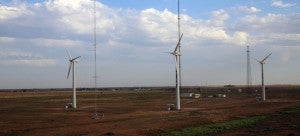This commentary originally appeared on our Texas Clean Air Matters blog.
Over the past several years, a combination of market forces and targeted policies has brought about enormous growth in clean energy technologies around the United States. A clean energy economy has developed around these new technologies, creating tens of thousands of homegrown jobs each year. Despite the industry’s initial surge, recent economic uncertainty has led to a plateau in clean energy job growth in most, but not all, regions in the U.S.
According to a report released by Environmental Entrepreneurs, the U.S. created 10,800 clean jobs in the third quarter of 2013, down from 37,000 in the previous quarter.
Notably, Texas doesn’t follow the national trend. Texas clean energy companies created over 660 jobs in the fall quarter of 2013 alone, up from less than 500 jobs in the previous quarter, cementing Texas in the list of top 10 states for clean energy jobs. Read More















